Building of the Day: 380 Henry Street
(Photograph: Nicholas Strini for Property Shark, 2012) Brooklyn, one building at a time. Name: Originally St. Peter’s Hospital, later Congress Nursing Home, Cobble Hill Nursing Home, now Cobble Hill Health Center Address: 380 Henry Street Cross Streets: Warren and Congress Streets Neighborhood: Cobble Hill Year Built: 1888, “remodeled” 1964, restored 1994 Architectural Style: Romanesque Revival…
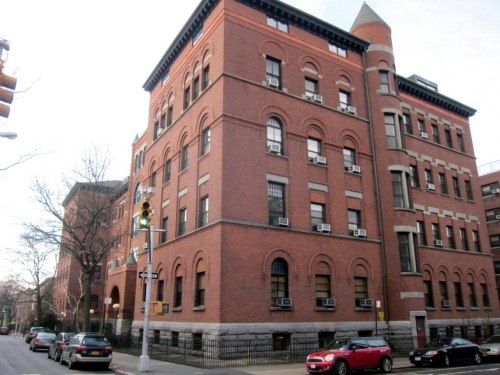

(Photograph: Nicholas Strini for Property Shark, 2012)
Brooklyn, one building at a time.
Name: Originally St. Peter’s Hospital, later Congress Nursing Home, Cobble Hill Nursing Home, now Cobble Hill Health Center
Address: 380 Henry Street
Cross Streets: Warren and Congress Streets
Neighborhood: Cobble Hill
Year Built: 1888, “remodeled” 1964, restored 1994
Architectural Style: Romanesque Revival
Architect: J. William Schickel & Co. 1994 restoration: Stanley Maurer
Other Buildings by Architect: Most Holy Trinity Church, WB, St. Ignatius Loyola Church, Manhattan
Landmarked: Yes, part of Cobble Hill HD (1969)
The story: St. Peter’s Hospital was founded by the Sisters of St Francis, aka Sisters of the Poor, in 1864, and operated from a building on the corner of Congress and Hicks Streets, in what was then South Brooklyn, today known as Cobble Hill. This order of nuns originated in France, and its mission was to help the poor. After 26 years, the hospital had outgrown its original buildings and funds were raised to build this new building which spanned the block of Henry Street, between Warren and Congress Streets. The architect was J. William Schickel & Co. and the year was 1888.
In a report in the Brooklyn Medical Journal of June, 1890, Dr. Henry Conkling wrote of the mission of the Sisters, and the new hospital. It was a free hospital, he declared, welcoming in any who needed help. “The hospital is under the direct management of the Sisters,” he wrote. “The idea of its creation was to care for the poor and the sick. To it they may come without money and without price. The poor man who comes to the door is never asked whence he comes or if he has money. The simple question to be decided is ‘Is he sick?’”
The neighborhood was far from the posh area it is now, and was quite near the tenements and slums near the waterfront, where thousands of people were crammed into substandard housing, making their livings from the factories and riverfront jobs nearby. For many, this hospital would literally be the difference between life and death. Most of the patients were admitted for tuberculosis, bronchitis, rheumatism and alcoholism.
The hospital was designed as a large complex, with a large main building with two wings taking up the entire block length of Henry Street. Attached in the back by corridors were more annexes, with a chapel, convent, laundry, morgue, stable, and furnace room. The main building had kitchens in the basement, and the full contingent of doctor’s offices, patient wards, operating rooms, pharmacy, etc. The hospital was designed by J. William Schickel, one of Brooklyn’s better known German-American architects. For many years, it was the largest building in Cobble Hill.
In 1962, the Sisters of the Poor closed the hospital, due to lack of funds. Two years later, the buildings were gutted, the walls replaced by concrete and cinder block, and the building turned into the Congress Nursing Home. The conversion was done with a heavy hand, architectural butchery, really, eliminating most of the charm from the building; Schickel would not have recognized his creation. The 6th floor and peaked roofs were destroyed, the large windows filled in, and the original entryway, which projected into the street, and had a terra-cotta frieze was also destroyed. Also destroyed was the entire central entrance bay, up to and including the seventh floor of the tower. This bay was replaced with a broad band of yellow brick that clashed terribly with the original building.
In spite of this, the building was landmarked as part of the Cobble Hill Historic District in 1969. By 1989, the building, now the Cobble Hill Nursing Home, needed to expand, and they wanted to put a new 5 story addition in the back courtyard. This met with neighborhood opposition and a compromise was worked out with the Home, the Community Board and the LPC. As part of the deal, the front entrance and tower was rebuilt, and the original top floor was put back on. The new entrance is not as good as Schickel’s, but light years better than what was there before, and many would not be able to tell the difference. Today, the complex is called the Cobble Hill Health Center, still providing senior care. GMAP
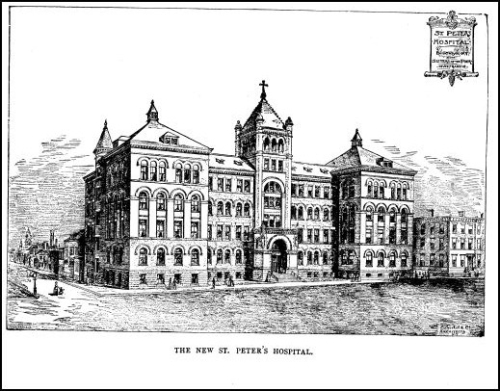
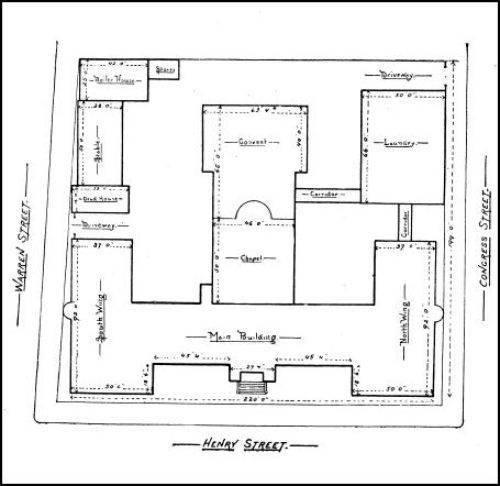
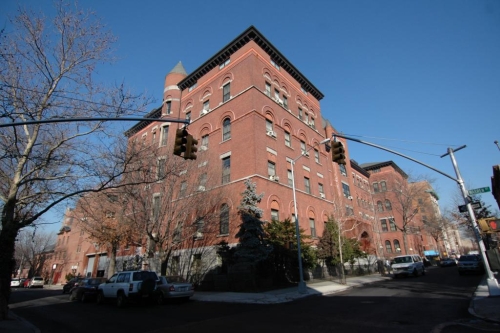
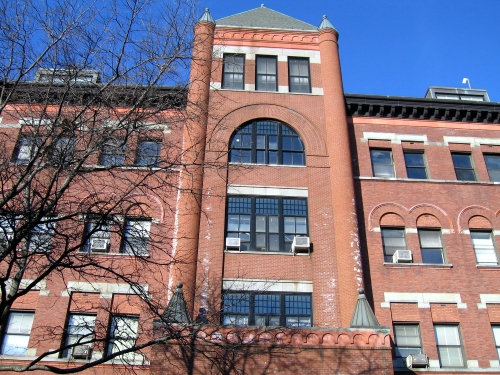
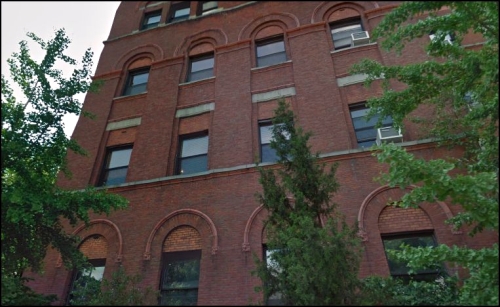

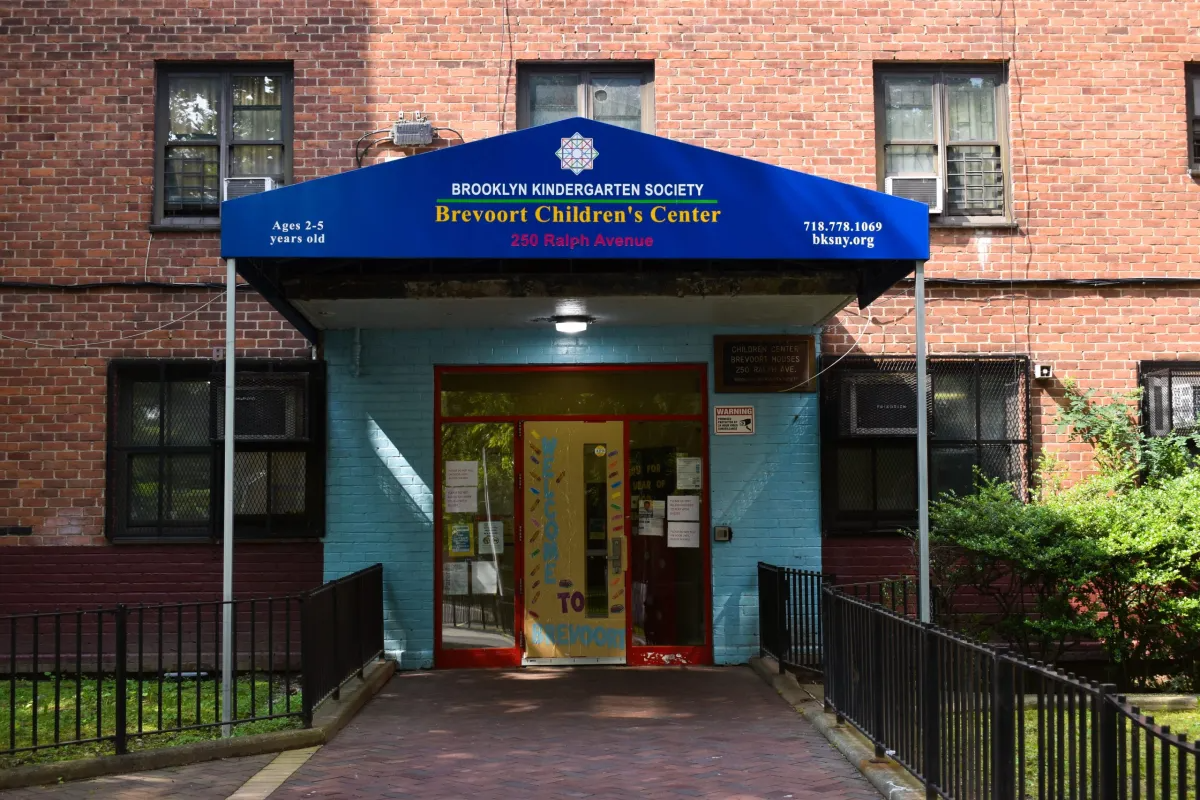
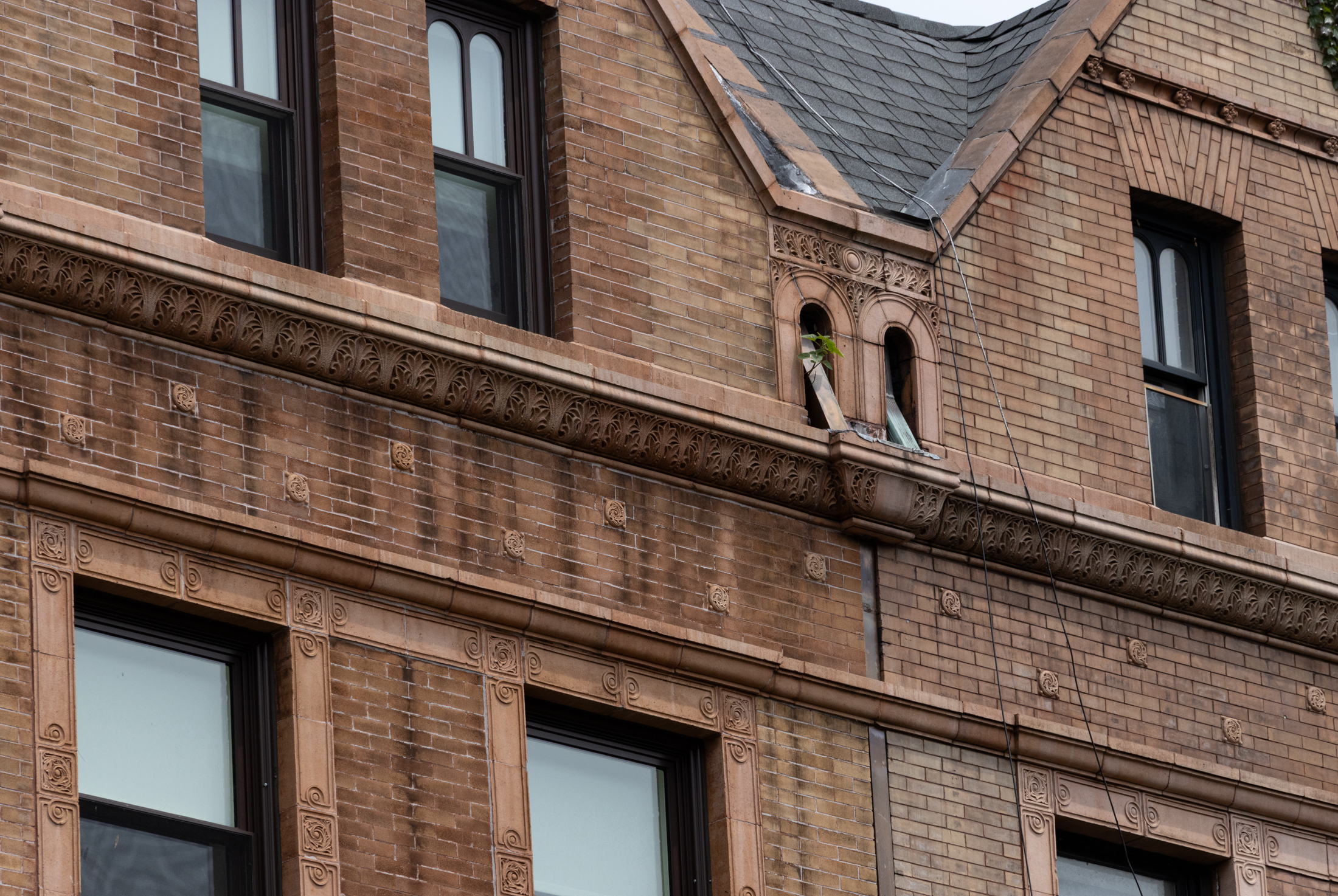
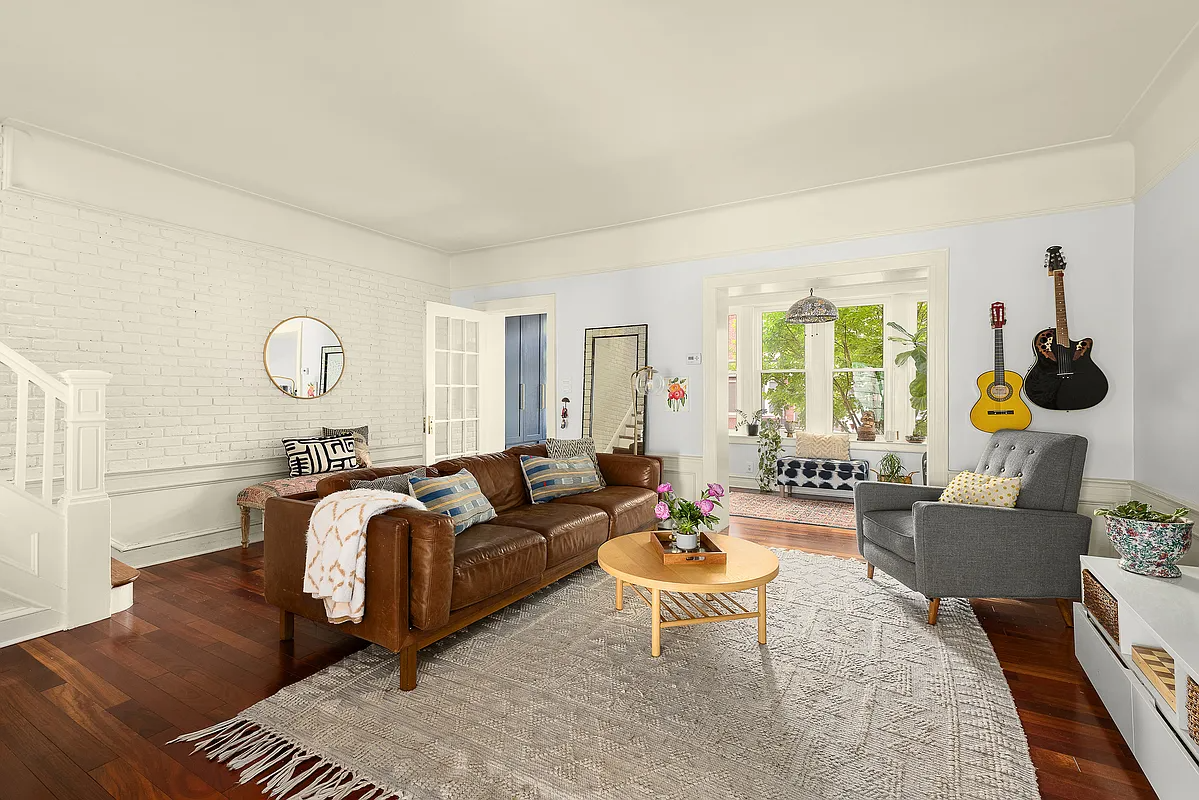
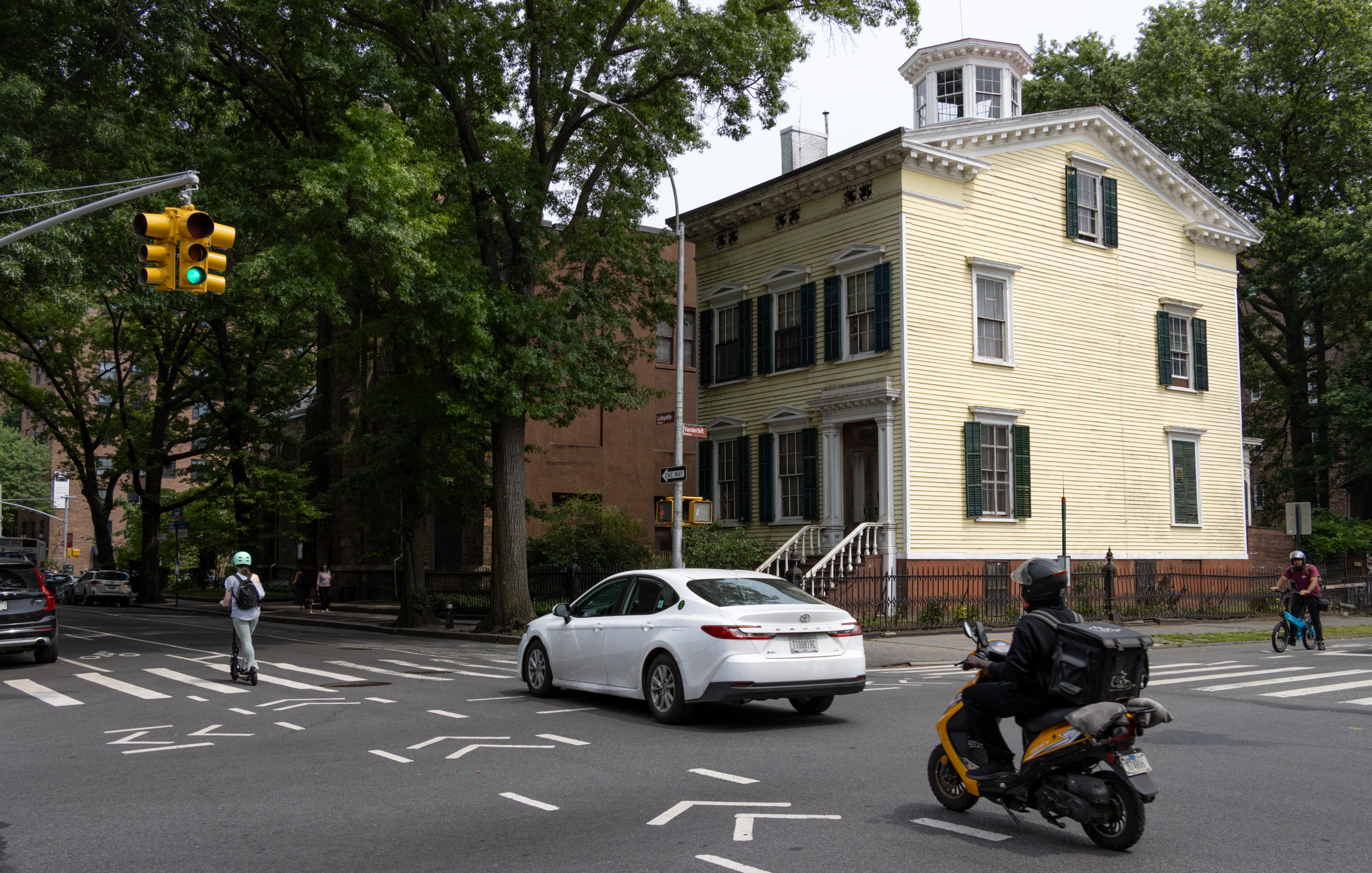
If you’re running short on Brooklyn subjects, come on into Manhattan. I’ll pay carfare.
This was no fun to look at when I wrote about it 20+ years ago, and it’s no fun to look at now. Next!!